Early learning and childcare funding: Primary 1 deferral pilot evaluation
Evaluation report for the deferral pilots 2021 to 2022 to inform the national roll-out of the additional year of early learning and childcare funding to eligible children who defer entry to Primary 1 from August 2023.
Appendix 4: Additional deferral uptake data
Deferral uptake by pilot local authority area
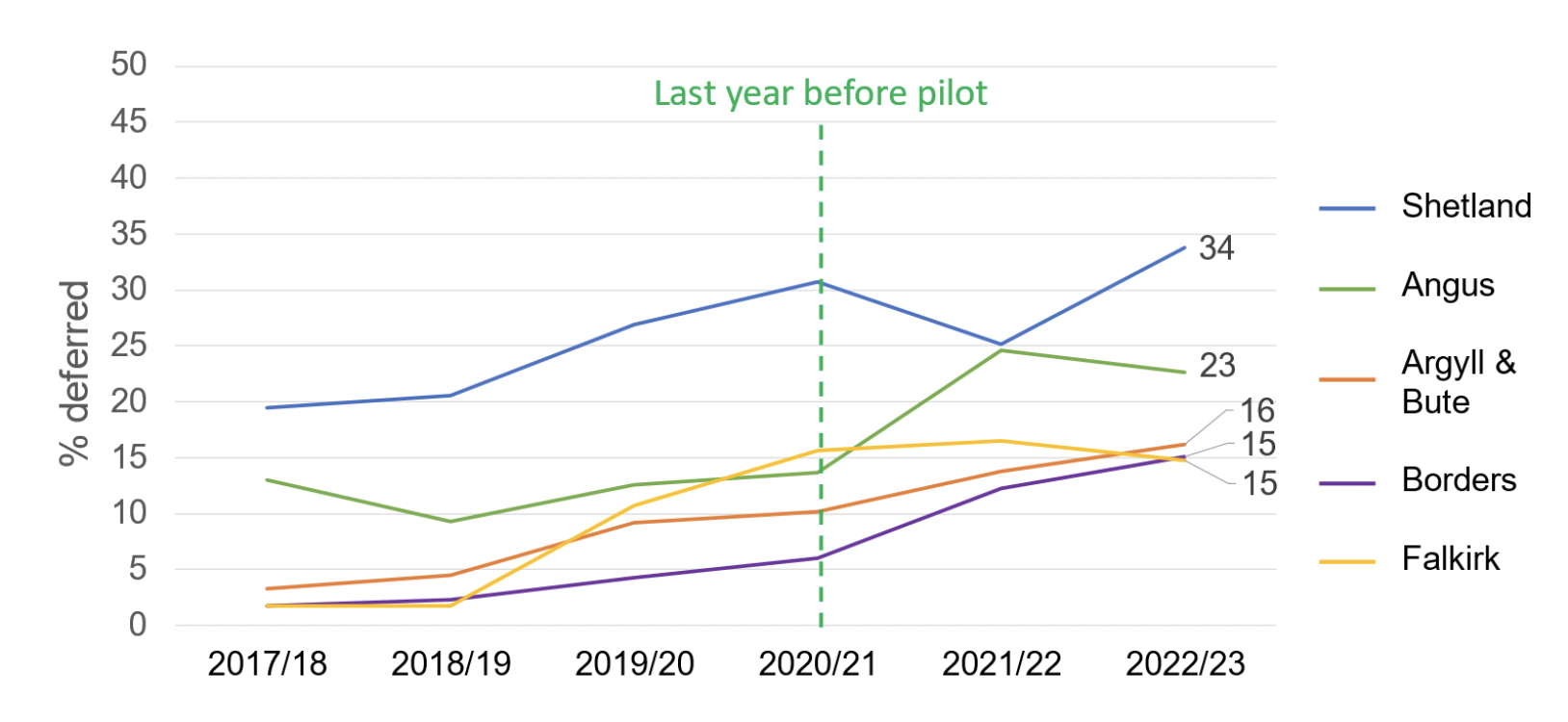
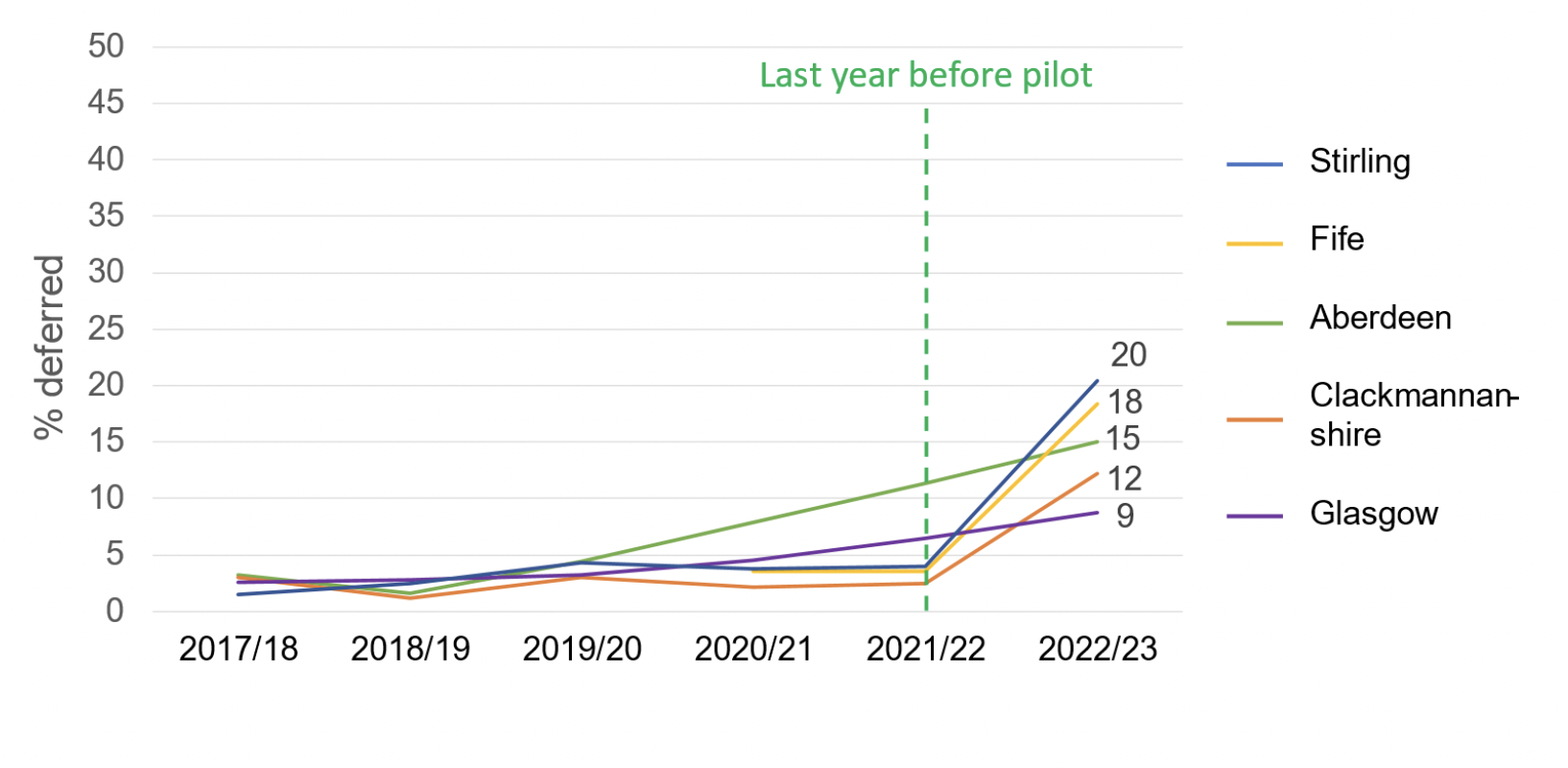
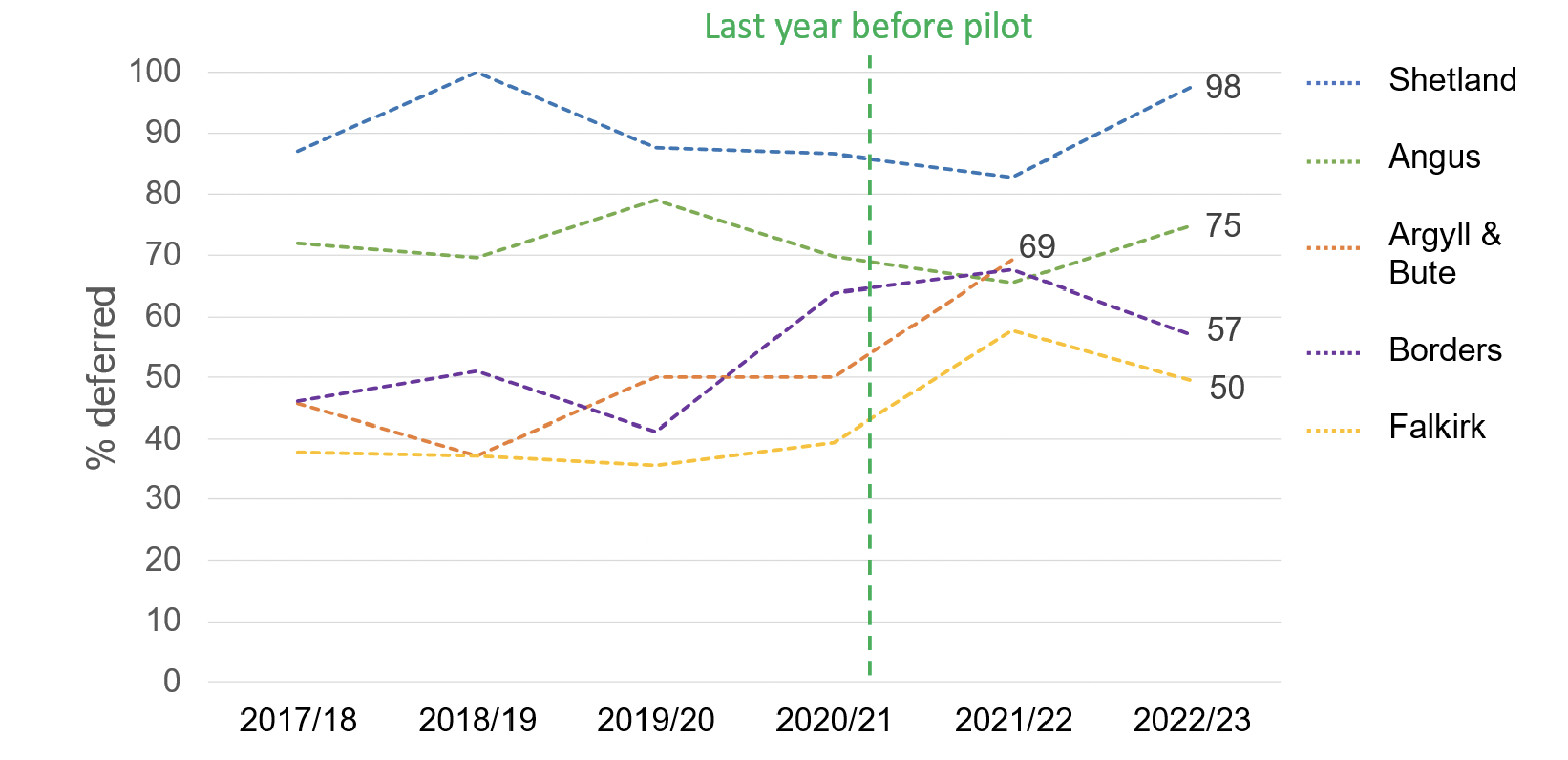
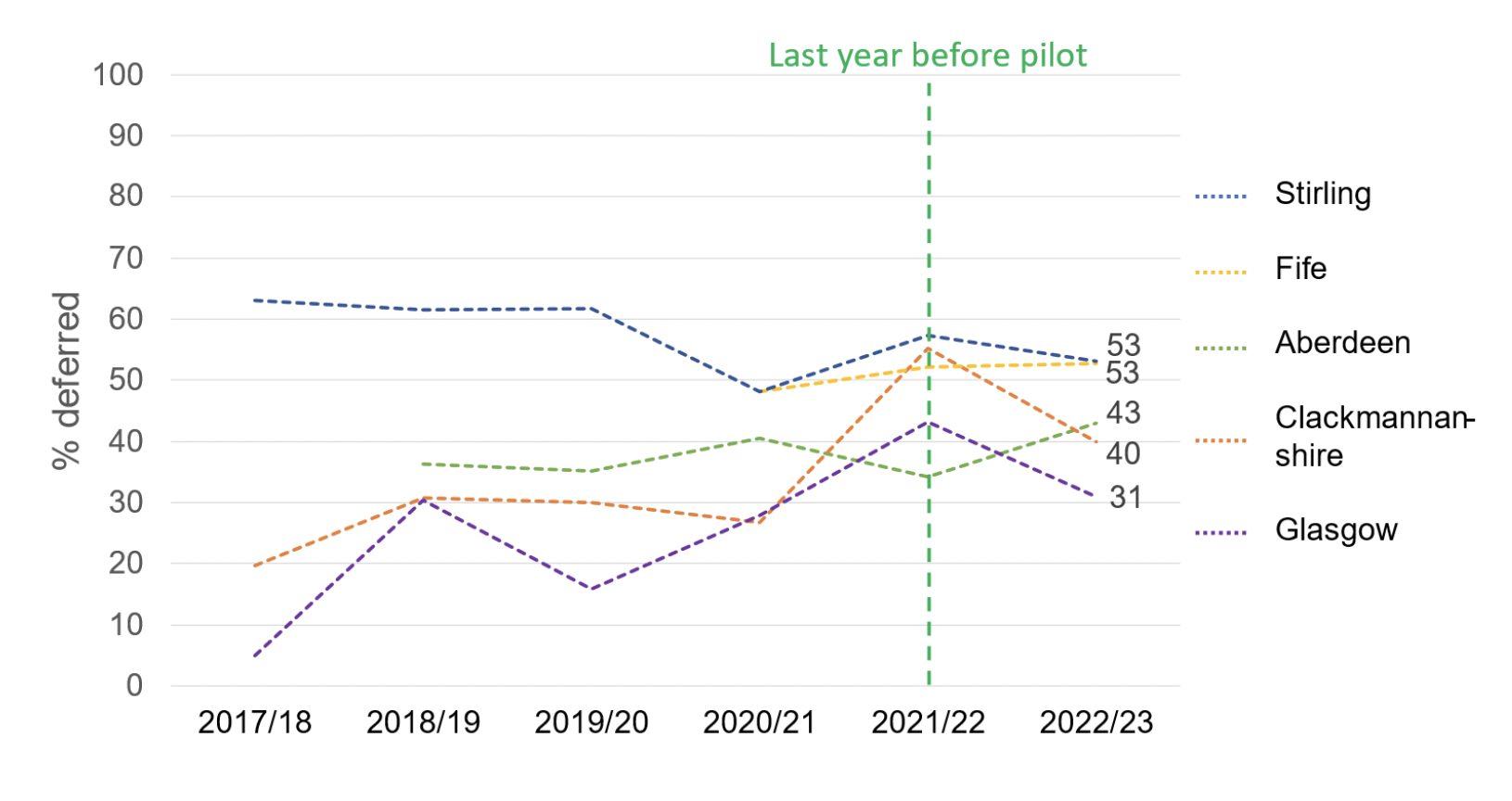
Deferral uptake by SIMD (Scotland wide data)
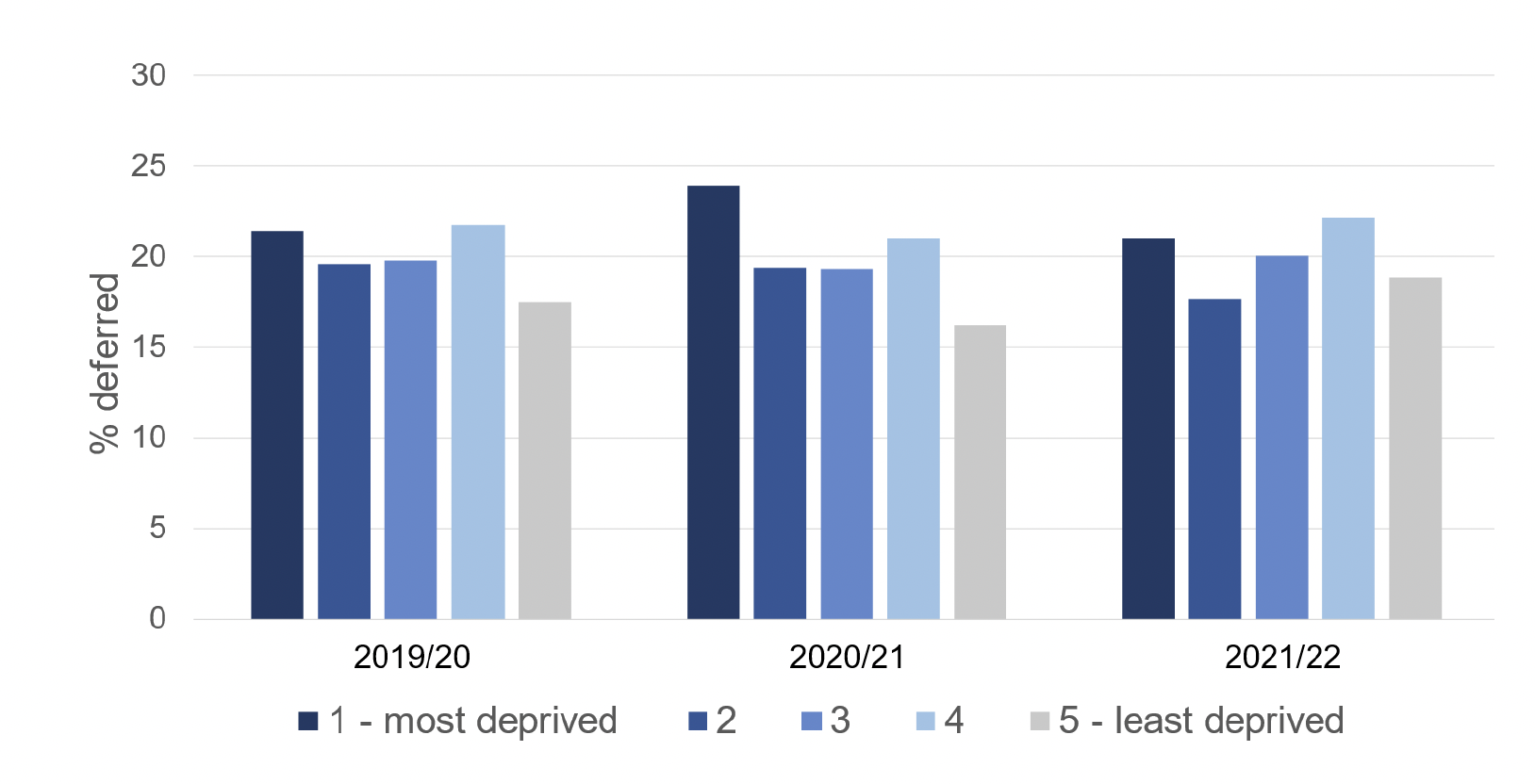
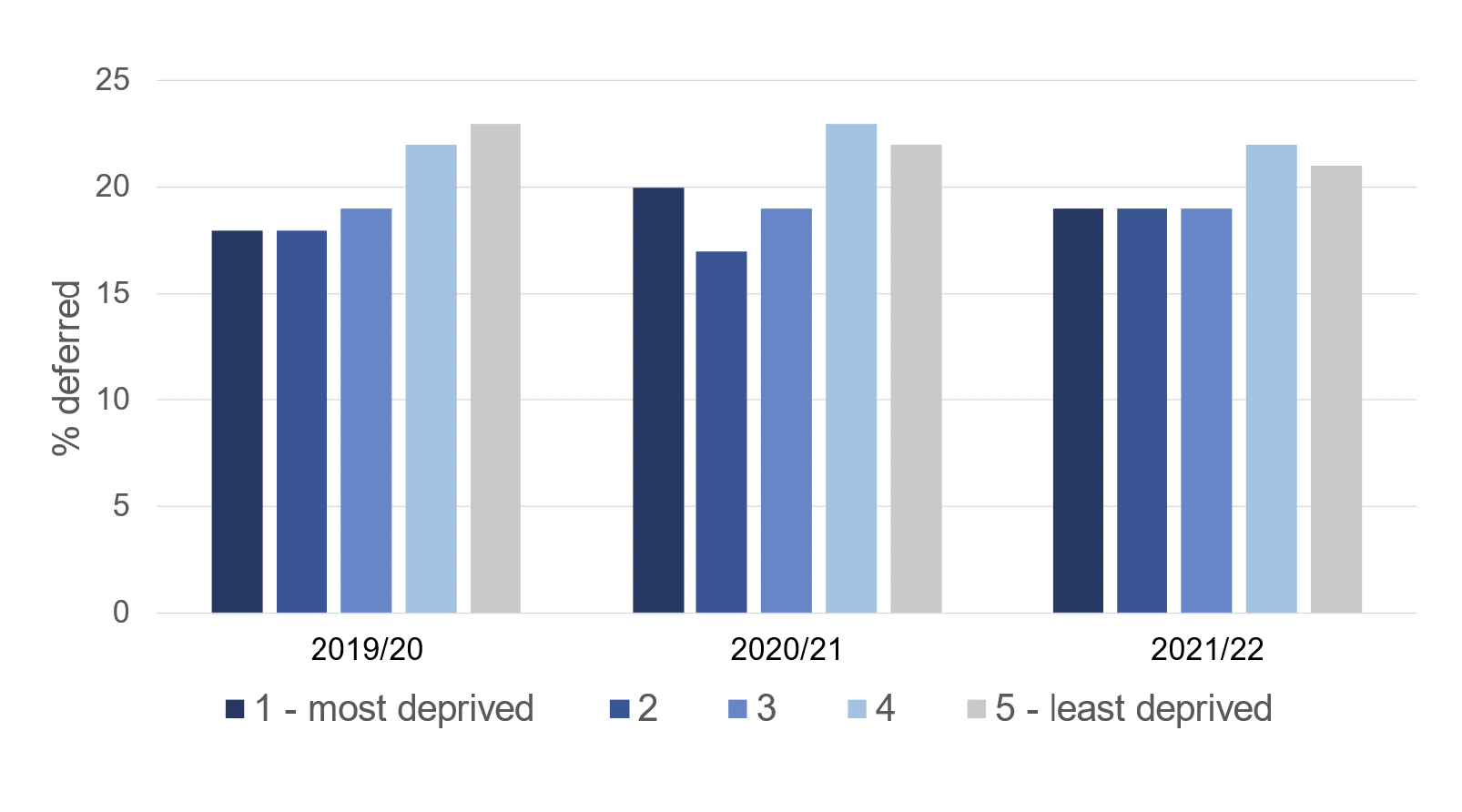
Contact
Email: socialresearch@gov.scot
There is a problem
Thanks for your feedback